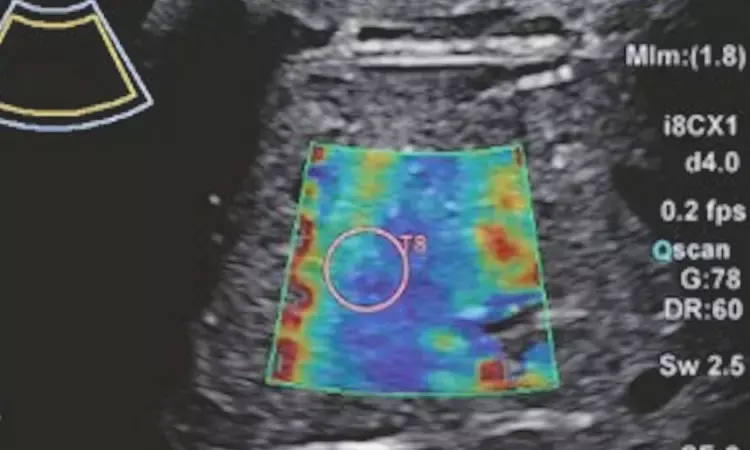- Home
- Medical news & Guidelines
- Anesthesiology
- Cardiology and CTVS
- Critical Care
- Dentistry
- Dermatology
- Diabetes and Endocrinology
- ENT
- Gastroenterology
- Medicine
- Nephrology
- Neurology
- Obstretics-Gynaecology
- Oncology
- Ophthalmology
- Orthopaedics
- Pediatrics-Neonatology
- Psychiatry
- Pulmonology
- Radiology
- Surgery
- Urology
- Laboratory Medicine
- Diet
- Nursing
- Paramedical
- Physiotherapy
- Health news
- Fact Check
- Bone Health Fact Check
- Brain Health Fact Check
- Cancer Related Fact Check
- Child Care Fact Check
- Dental and oral health fact check
- Diabetes and metabolic health fact check
- Diet and Nutrition Fact Check
- Eye and ENT Care Fact Check
- Fitness fact check
- Gut health fact check
- Heart health fact check
- Kidney health fact check
- Medical education fact check
- Men's health fact check
- Respiratory fact check
- Skin and hair care fact check
- Vaccine and Immunization fact check
- Women's health fact check
- AYUSH
- State News
- Andaman and Nicobar Islands
- Andhra Pradesh
- Arunachal Pradesh
- Assam
- Bihar
- Chandigarh
- Chattisgarh
- Dadra and Nagar Haveli
- Daman and Diu
- Delhi
- Goa
- Gujarat
- Haryana
- Himachal Pradesh
- Jammu & Kashmir
- Jharkhand
- Karnataka
- Kerala
- Ladakh
- Lakshadweep
- Madhya Pradesh
- Maharashtra
- Manipur
- Meghalaya
- Mizoram
- Nagaland
- Odisha
- Puducherry
- Punjab
- Rajasthan
- Sikkim
- Tamil Nadu
- Telangana
- Tripura
- Uttar Pradesh
- Uttrakhand
- West Bengal
- Medical Education
- Industry
For liver disease in children, ultrasound correlates well with MRI: Study

USA: A recent study in the journal Radiology has found a moderate to high correlation between ultrasound shear-wave speed (SWS) and MR elastography–derived stiffness in children, adolescents, and young adults with known or suspected liver disease. US SWS predicted an abnormal liver shear stiffness with high performance.
To identify changes of liver disease, quantitative US techniques can be used but there is a sparse data in relation to their diagnostic performance and relationship to MRI measures. Andrew T. Trout, University of Cincinnati College of Medicine, Cincinnati, Ohio. and colleagues aimed to define associations between quantitative US and MRI measures of the liver in children, adolescents, and young adults with liver disease in a prospective study. They also aimed to define the predictive ability of quantitative US measures to detect abnormal liver stiffening and steatosis defined with MRI.
In the study, study, consecutive patients aged 8–21 years and known to have or suspected of having liver disease and BMI less than 35 kg/m2 underwent 1.5-T MRI and quantitative liver US during the same visit at a pediatric academic medical center between April 2018 and December 2020. Acquired US parameters aming other included SWS and attenuation coefficient.
Comparison was made between US parameters with liver MR elastography and liver MRI proton density fat fraction (PDFF). To assess associations and determine the performance of US relative to that of MRI, they performed Pearson correlation, multiple logistic regression, and receiver operating characteristic curve analyses.
The evaluation of a total of 44 study participants (mean age, 16 years ± 4 [SD]; age range, 8–21 years; 23 male participants) was done.
Findings of the study were as follows:
- There was a positive correlation between US SWS and MR elastography stiffness (r = 0.73).
- US attenuation was positively correlated with MRI PDFF (r = 0.45).
- For the prediction of abnormal (>2.8 kPa) liver shear stiffness, SWS (1.56 m/sec [7.3 kPa] cutoff) had an area under the receiver operating characteristic curve (AUC) of 0.95 with 91% sensitivity (20 of 22 participants) and 95% specificity (20 of 21 participants).
- For the prediction of abnormal (>5%) liver PDFF, US attenuation (0.55 dB/cm/MHz cutoff) had an AUC of 0.75 with a sensitivity of 73% (eight of 11 participants) and a specificity of 73% (24 of 33 participants).
To conclude, "ultrasound shear-wave elastography can correlate well with MR elastography for measuring liver stiffness in children and young adults with known or suspected liver disease."
According to the authors, their findings warrant discussion and that future research is required for validation, as well as evaluating the predictive performance of these ultrasonic measures across different system manufacturers.
Referennce:
Alves VPV, Dillman JR, Tkach JA, Bennett PS, Xanthakos SA, Trout AT. Comparison of Quantitative Liver US and MRI in Patients with Liver Disease. Radiology. 2022 May 24:212995. doi: 10.1148/radiol.212995. Epub ahead of print. PMID: 35608446.
Dr Kamal Kant Kohli-MBBS, DTCD- a chest specialist with more than 30 years of practice and a flair for writing clinical articles, Dr Kamal Kant Kohli joined Medical Dialogues as a Chief Editor of Medical News. Besides writing articles, as an editor, he proofreads and verifies all the medical content published on Medical Dialogues including those coming from journals, studies,medical conferences,guidelines etc. Email: drkohli@medicaldialogues.in. Contact no. 011-43720751


